Posts Tagged ‘“Toy recall”’
Toys Recalled in Summer 2013 Pose Choking Hazard, Injury Risks
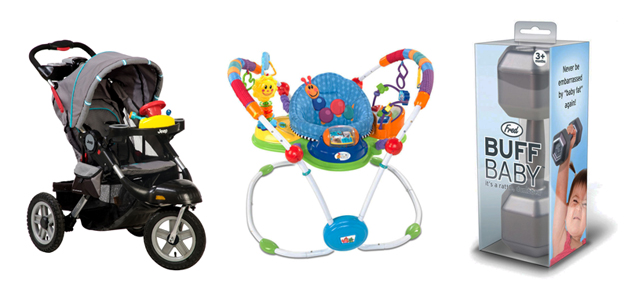
If you have young children, you have probably logged a few hours watching them play this summer. This joy of parenthood comes with an important responsibility: to make sure their toys are safe.
In the United States, the Consumer Product Safety Commission (CPSC) regulates the toy industry. Toys for children 12 and under are required to pass third-party testing and certification, but each year, defective toys still make it to store shelves and cause serious injuries and deaths. In 2011, more than 260,000 children were treated for toy-related injuries in the hospital emergency room and 13 were killed, according to the CPSC.
If you are a parent, be vigilant. Start by inspecting your children’s toys every time they play. Check the age labeling. Make sure they are no small parts that pose a choking hazard. When in doubt, set the toy aside and have your children play with something else.
Another way to protect your children is to stay informed. You may not see every toy recall on the TV news, but can visit the CPSC website and social media sites for news on toy recalls. A few recalls from this summer include:
Baby Einstein Musical Motion Activity Jumpers
Kids II voluntarily recalled about 400,000 Baby Einstein Musical Motion Activity Jumpers earlier this month. Another 8,500 activity seats have been recalled in Canada. The toy is linked to 61 injuries.
The hazard is when infants reach out and play with one of the attached toys (the toy with the smiley face), it rebounds back.
Kids II received 100 incident reports, including the 61 injuries. Injuries included bruises, facial lacerations and a 7-month-old boy who sustained a lineal skull fracture. In one case, an adult suffered a chipped tooth.
Kids II, which is based in Atlanta, Georgia, is the product importer. The toy was manufactured in China prior to November 2011. Kids II will replace the defective part for consumers for free. Many models were sold at Target, Toys R Us and Amazon.com between May 2010 and May 2013. Recall notice.
Kolcraft Jeep Liberty Strollers Kolcraft recalled 96,000 strollers in the United States after 39 reports of defective wheels. The inner tube can rupture, causing the wheel rim to fracture and fly off as a projectile. The reports included 18 injuries, most of which occurred when an adult attempted to fill a tire with air. Children and adults reported suffering lacerations, abrasions and contusions.
The stroller was manufactured in China. Kolcraft Enterprises, Inc. of Chicago, Illinois was the product importer. It was sold at Burlington Coat Factory, Sears and Toys R Us and other retailers from June 2010 to June 2013 for between $150 and $180.
Consumers are advised to stop using the defective stroller and contact Kolcraft for free replacement wheels. Recall notice.
“Buff Baby” Baby Rattles
In June, Fred & Friends announced the voluntary recall of 47,500 “Buff Baby” baby rattles in the United States. The rattles, which are designed to look like a dumbbell weight, are designed for children 3 months and older. The rattles were recalled because they pose a choking hazard to young users. The cap can separate and expose the plastic pellets inside to infants. Fred & Friends received two reports of this happening, but no injuries.
The rattles were sold in specialty toy and baby stores nationwide and in Canada, as well as online through Amazon.com and other websites from October 2011 through June 2013.
Consumers are advised to stop using the rattles and contact Fred & Friends for a full refund. Fred & Friends, which is located in Cumberland, Rhode Island, is the distributor. The toy was manufactured in China. Recall notice.
Thermobaby Bath Seats Recalled Due to Drowning Hazard
The Aquababy Bath Ring was recalled after the CPSC determined it does not meet federal safety standards. The product is supposed to hold children secure in the bath, but the design poses a risk for tipping over.
SCS Direct Inc. of Milford, Conn. voluntarily recalled 7,500 of the bath seats. There were no injuries involved in this recall. The seats were designed for children five months to ten months old. It was sold through Amazon.com. Consumers are advised to stop using the product and contact SCS Direct for a $35 refund. Recall notice.
Read More
Dangerous Magnet Toys Recalled by Major Retailers
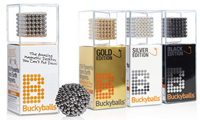
The Consumer Product Safety Commission (CPSC) has moved a step closer to taking two dangerous magnet toys out of the hands of children.
On April 12, six retailers voluntarily recalled Buckyballs and Buckycubes. The stores included Barnes & Noble, Brookstone, some Hallmark stores, Marbles the Brain Store and Think Geek.
Maxfield & Oberton Holdings of New York City, the importer and distributor, refused to issue a recall last year, prompting the CPSC to file a lawsuit against the company in July to stop sales. The rare legal action – one of just four taken by the CPSC in the past 11 years – resulted in the company discontinuing its products in October. It stopped doing business in December.
The product was manufactured by Ningo Prosperous Imp. Exp. Co. Ltd. of Ningbo City in China.
Buckyballs and Buckycubes vary in size and color, but they are essentially a ball or cube of small powerful magnets. They were sold in containers of 10 to 216 magnets that can become loose. The first of the two products was introduced in the U.S. in March 2009. Since then, over three million sets of magnets have been sold in U.S. retail stores and online.
Maxfield & Oberton initially marketed Buckyballs to children, calling it “an amazing toy.” It later rebranded the magnet toys as an adult desk toy and stress reliever.
But while the magnets were being marketed to adults, the CPSC was still receiving reports that children were swallowing them. It has received 54 reports of injuries, all but one requiring medical treatment.
CPSC Complaint
The CPSC’s July 25, 2012 complaint alleged that the magnet products had defective labeling and warnings, defective design, and posed a substantial product hazard.
The CPSC began working with the company on labeling three years ago, when the magnets were labeled for use by children “Ages 13+.” The agency said the magnets should have been marketed for age 14 and up.
Maxfield & Oberton changed the labeling and agreed to a voluntary recall of 175,000 magnet toys, but the CPSC said the injuries continued. In its complaint, it states, “…labeling and warning labels cannot guard against the foreseeable misuse of the product and prevent the substantial risk of injury to children.”
Company officials did not agree with the CPSC’s action. In October, they posted a statement on their website that read in part: “We’re sad to say that Balls & Cubes have a one-way ticket to the Land-of-Awesome-Stuff-You-Should-Have-Bought-When-You-Had-the-Chance.”
Dangerous Toy
Over the past few years, the CPSC set up a Magnets Information Center on its website to educate the public about the danger of swallowing magnets.
The risk is that if a child ingests more than one of the powerful magnets, they can become attracted to each other while in the intestines, pinching tissue and damaging the intestinal walls. This can result in a wide range of symptoms, including vomiting, abdominal pain, infection and death. Surgery is often required and becomes more complicated because the magnets can stick to the metal surgical tools.
And in some cases children ingested more than one or two. CBS News reported the case of a 3-year-old Oregon girl who swallowed 37 Buckyballs. The CPSC complaint details cases of other young children who have swallowed numerous magnets.
Related:
CPSC administrative complaint
Recall information for consumers
Defective Products: The 10 Most Dangerous Toys of 2011
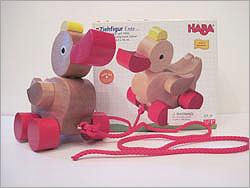 As the holidays approach, the lawyers at Breakstone, White & Gluck, PC urge you to shop carefully to avoid dangerous toys.
As the holidays approach, the lawyers at Breakstone, White & Gluck, PC urge you to shop carefully to avoid dangerous toys.
Each year, companies recall thousands of toys that put children at risk for injuries such as strangulation, lacerations, falls and death. According to the Consumer Product Safety Commission, the 34 toy recalls in fiscal 2011 were a marked decrease from 172 in 2008, but toy-related deaths rose slightly last year, with 17 children suffering wrongful deaths from defective toys.
In 2010, about 181,500 children were treated in emergency rooms for toy-related injuries. Non-motorized scooters continue to cause the most injuries, while toys with small parts and unsafe cords are also involved in many recalls.
Each year, a non-profit Boston organization, World Against Toys Causing Harm Inc., (WATCH) releases a list warning parents about the hazards of certain toys. The toys present hazards for burn injuries, strangulation injuries, and other bodily injury. This year’s “WATCH’s Most Dangerous Toys of 2011,” includes:
1) The Incredible Shrinky Dinks Maker
Potential hazard: Possible electric shock and burn injuries.
2) Sword Fighting Jack Sparrow
Potential Hazard: Possible eye and other bodily injuries.
3) ‘Gigan’ Godzilla Figure
Potential hazard: Possible puncture wounds.
4) Twist ‘n Sort
Potential hazard: Small parts cause a choking hazard.
5) Power Rangers Samurai Mega Blade
Potential hazard: Blade can cause injuries.
6) Fold and Go Trampoline
Potential hazard: Can cause injuries to people using it, including to the head and neck.
7) Pulling Animal Duck
Potential hazard: Potential for strangulation injuries.
8) School Bus
Potential hazard: Choking hazard.
9) Z-Curve Bow
Potential hazard: Danger to eyes.
10) Stepper ‘Low Rise” Stilts
Potential hazard: Head and other injuries from impact.
Defective Toy Truck Recalled by Fisher-Price
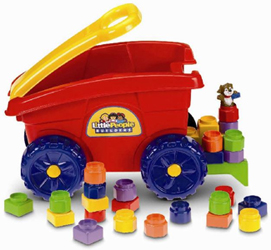 Fisher-Price has recalled a popular toy truck after its plastic handle has been found to pose a laceration risk.
Fisher-Price has recalled a popular toy truck after its plastic handle has been found to pose a laceration risk.
The East Aurora, New York toymaker recalled its Little People® Builders’ Load ‘n Go Wagon in cooperation with the U.S. Consumer Product Safety Commission (CPSC) and Health Canada this week. About 208,000 defective toy trucks were recalled in the United States and 2,800 in Canada. The toy trucks were sold in mass merchandise retail stores nationwide from June 2009 through July 2011 for about $25. They were manufactured in Mexico.
The toy truck is being recalled because its plastic handle has molded-in reinforcement. If a child falls on it, he could suffer a laceration.
The CPSC and Fisher-Price are aware of seven reports of personal injuries. Five reports came from children requiring surgical glue or stitches.
Consumers affected by the Fisher-Price recall can call 800-432-5437 or visit www.service.mattel.com for a free repair kit. The recall involves the wagon with the model number P8977. More information is available on the Mattel website.
Product recalls and deaths related to unsafe toys have declined in recent years, but toy-related injuries have been increasing. In 2009, 186,000 children under 15 were treated for toy-related injuries in emergency rooms, up from 152,000 in 2005.
In 2009, 12 children under 15 suffered wrongful deaths involving defective toys, a 50 percent decrease over the two prior years. Meanwhile, in 2010 there were 44 toy recalls, a significant drop from 172 in 2008.
The CPSC offers a few tips for parents: purchase age-appropriate toys, include safety gear whenever you buy sports equipment and ride-on toys and always be aware of your child’s location during play. Parents should also closely inspect toys prior to giving them to children.
Read More
Fisher-Price Recall Hits Parents, Children Hard
In the year’s largest recall, Fisher-Price has pulled more than 11 million children’s bikes, high chairs and other toys from the shelves. The recall impacts consumers in the United States and Canada. Parents in the two countries are asked to check their homes and immediately stop using any products on the recall list.
The Fisher-Price recall included nearly 50 types of products, including over 7 million tricycles such as the Hot Wheels Trike and the Barbie Butterfly Trike. These toys have a protruding part that can cut children. The company received 10 reports of children being injured.
A million high chairs sold under 23 different names were recalled. The high chairs can cut children on the legs. Seven children required stitches.
The Fisher-Price recall also included 2.8 million infant toys with inflatable balls. The balls have a valve that easily comes off and poses a choking hazard. Also recalled for creating a choking hazard were 120,000 car toys with small plastic wheels that easily come off.
For a full list of recalled toys, click here. Consumers impacted can contact the company’s recall information web page.
Fisher-Price, based in East Aurora, New York, is owned by Mattel, of El Segundo, California. The company recalled the toys voluntarily in partnership with the Consumer Product Safety Commission and Health Canada.
The Fisher-Price recall is a reminder parents need to test toys themselves and watch their children while playing. For infants and younger children, one way to judge whether a toy is a choking hazard is to take a toilet paper roll. Hold the toy or toy piece up to the toilet paper roll. If it’s small enough to slide through, it poses a hazard for your young child.
Read More
Consumer Safety Alert: 1.8 Million Plastic Toys Recalled from Family Dollar Stores
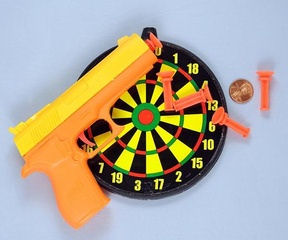
The U.S. Consumer Product Safety Commission (CPSC) has announced the voluntary recall of 1.8 million toy dart gun sets sold at Family Dollar Stores after they were involved in the asphyxiation deaths of two young boys.
The CPSC issued the recall in cooperation with the Charlotte, North Carolina discount store. The importer, Henry Gordy International, Inc., of Plainfield, N.J. refused to recall the soft, plastic toy, which poses a risk if a child places it in his mouth. The defective toy can be inhaled into the throat and prevent a child from breathing. The toy was sold exclusively through Family Dollar Stores from September 2005 through January 2009 for about $1.50.
“Parents should take these toys out of their child’s hands immediately,” said Massachusetts personal injury attorney David W. White of Breakstone, White & Gluck in Boston. “Given the size of this recall, you really want to take a minute to look through your toy bin if you do any shopping at the Family Dollar Stores.”
A 9-year-old boy in Chicago, Illinois and a 10-year-old boy in Milwaukee, Wisconsin suffered asphyxiation deaths while playing with the toy, which was manufactured in China. No Massachusetts consumer safety problems have been announced.
Consumers should discard the toys or return them to a Family Dollar store for a full refund. For additional information, contact Family Dollar at (800) 547-0359 between 8 a.m. and 5 p.m. ET Monday through Friday, or visit the firm’s website at www.familydollar.com.
For more information, read the U.S. Consumer Product Safety Commission’s recall. announcement.

